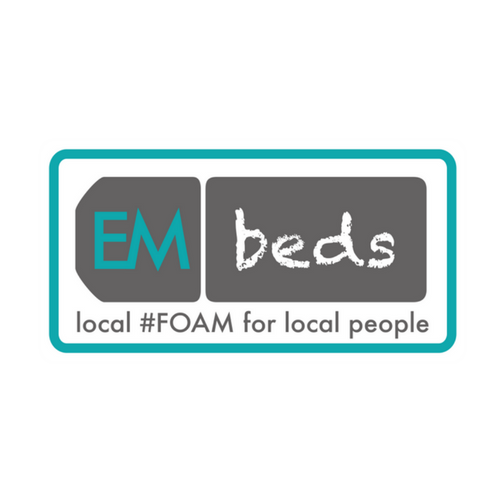The Case
An elderly patient attends the ED with difficulty mobilising, Nursing staff tell you that the patient needs a CT head for STROKE? – “They are really unsteady if they try to stand and they can’t lift their arms up”.
When you examine the patient
- GCS is 15
- CN’s intact
- Upper limb PN’s
- No sensory deficit
- Bicep, Tricep, Finger extension/flexion/abduction – Power 5/5 bilaterally
- Shoulder movement – 3/5 bilaterally
- Lower limb PN’s
- No sensory deficit
- Knee and Ankle extension/flexion – Power 5/5 bilaterally
- Hip flexion/abduction – Power 3/5 bilaterally
Too often when patient presents with weakness in the limbs we jump to irradiating them for fear of a stroke. However, we should be engage our curiosity and and use those clinical skills we have honed over years, as not every weakness is a stroke.
Proximal Myopathy/Muscle weakness
- Weakness of the proximal muscles – i.e. Shoulders and hips only
- No neurological deficit – Sensation and reflexes intact
- Not fatigable – Unlike myasthenia graves, anaemia, the weakness should be there constantly
- No muscle atrophy – This would be rare in myopathies and tends to occur in neuropathies
- Symmetrical – i.e. Both arms affected so it may be quickly differentiated from stroke
- Often affects both shoulders and hips – Leaving the rest of the arms and legs intact, differentiating it from single site neurological lesion
Important differentials to Consider [Not Proximal Myopathies]
- Central Cord Syndrome: Generally presents after a fall with head/neck injury, in elderly patients with arthritic necks. It has a “cape” distribution of neurological deficit, which is irregular (so often affects not just shoulder girdle but also arms and is often non symmetrical). It can also affect sympathetic chain (so low BP and HR)
- Multiple Sclerosis: Often presents in mild age, with focal neurological deficits, there is often a history of previous episodes at different sites
- Motor Neuron Disease: Progressive disease, that will affect all muscle groups, often with wasting and fasciculation’s
- Myasthenia Gravis: Fluctuating weakness, affecting all muscle groups, and can be demonstrated by rapid fatiguability of which ever muscles you test.
- Guillain–Barre Syndrome: Typically acending from feet (Miller-Fisher syndrome is a rare form that descends from head) developing over days to weeks. Will not only affect proximal muscle groups and demonstrates areflexia in the affected regions.
The Proximal Myopathies
- Drugs: One of the most common causes, but should have a temporal relationship with commencing the drug. Common causes include: Statins, Fibrates, Steroids, Alcohol, Heroin and Cocaine
- Endocrine
- Hypo/Hyperthyroid: Histological studies show that myopathy is universal in these patients, although clinically present in all. [TFT]
- Hypoparathyroid/Osteomalacia: Calcium is essential for muscle function [Bone profile/Vit D]
- Hypo/Hyperkalaemia: Potassium is also vital for muscle function [U&E]
- Idiopathic Inflammatory Myopathies: Polymyositis and Dermatomyositis, both are rare but important to pick up as they have a strong association with both auto-immune disease and malignancy (typically: lung, ovarian, gastrointestinal, breast, non-Hodgkin’s lymphoma, and nasopharyngeal). They can often be treated by treating underlying cancer and using steroids. Both cause muscle breakdown this patients will have an elevated CK [CK]
- Paraneoplastic Syndromes: muscle weakness typically hip and lower leg (not caused by direct mass effect of tumour)
- Hereditary/Congenital Myopathies
- Facioscapulohumeral dystrophy: Autosomal dominant. Signs/Symps; facial weakness, shoulder weakness, hearing loss. Typically presents in childhood but can present as young adults
- Becker’s musculoskeletal dystrophy: X linked. Signs/Symps; lower limb weakness, (calf weaknesses the most common, toe walking, difficulty standing. Typically picked up 5-15 yrs old, occasional adult presentation
- Facioscapulohumeral dystrophy: Autosomal dominant. Signs/Symps; facial weakness, shoulder weakness, hearing loss. Typically presents in childhood but can present as young adults
- Infective: rare but important to consider and a good sexual health history should be explored (HIV, Hep B/C, Influenza, Enterococcus)
- Sarcoid: Is always a differential
What to do?
- Careful history and examination
- Tests: FBC, U&E, CK, LFT, TFT, Bone Profile, Vitamin D
- Medical input should be sort: one they may need support for the weakness, but also the are several important causes and associations that will need fairly rapid assessment and monitoring(this may be through AAU or admission depending on the patient.
